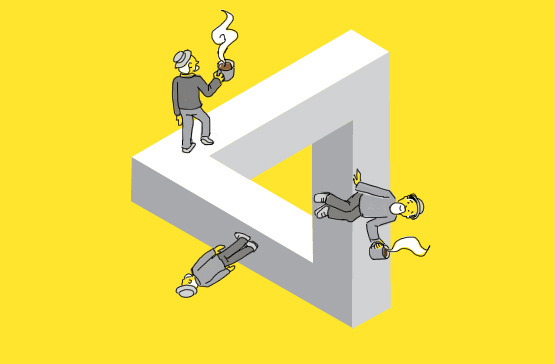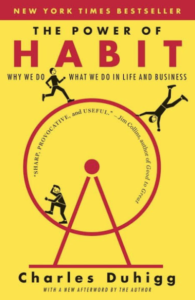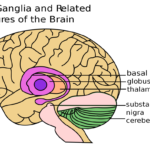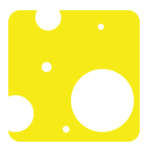 People thrive on routine. Although we seek new experiences to break predictability, and delight with surprises, having regularity is essential for long-term happiness. Since our routines are the basis for regular, predictable behaviors, marketing professionals see them as the holy grail for consistent and predictable sales.
People thrive on routine. Although we seek new experiences to break predictability, and delight with surprises, having regularity is essential for long-term happiness. Since our routines are the basis for regular, predictable behaviors, marketing professionals see them as the holy grail for consistent and predictable sales.
When consumers associate brands (or even rely on them) with their routines, it establishes a tremendous opportunity for long-term loyalty. This requires a deep and accurate understanding of how consumers form routines, their fundamental needs and the benefits that are unique to your product or service. Brands that find meaning and relevance in these routine behaviors are rewarded with lifetime customers.
Some routines are habits while others are rituals. Understanding the difference is essential in brand positioning.
According to Charles Duhigg , author of The Power Of Habit:
 Habits (at least from the evolving neurological perspective) are behaviors that are self-generated. A habit is a decision that someone makes at some point, and then stops making but continues doing. So, for instance, the first time you ate a donut at work, it was a decision. The 45th time, it was a habit that occurred, essentially, unthinkingly.
Habits (at least from the evolving neurological perspective) are behaviors that are self-generated. A habit is a decision that someone makes at some point, and then stops making but continues doing. So, for instance, the first time you ate a donut at work, it was a decision. The 45th time, it was a habit that occurred, essentially, unthinkingly.
Rituals, by contrast, are almost always patterns developed by an external source, and adopted for reasons that might have nothing to do with decision making. Someone might celebrate Thanksgiving with a turkey not because they love turkey, but because society has indicated that’s what we eat at Thanksgiving.
In part one of this two-part essay series, we’ll focus exclusively on habits and how brands function within them.
This May Be Habit-Forming
 Scientists believe that the cognitive process behind habits form in the basal ganglia , the part of the brain responsible for instinctual reactions. “Flight or fight” and other automatic responses come from it, which occur without conscious thought. When engaged in habitual behaviors, higher thought functions are not required. This frees up your conscious mind to focus on other complex thoughts. It explains why you can drive a car safely, which is extremely technically complex, but barely recall the trip if you’ve been having an important conversation during the ride.
Scientists believe that the cognitive process behind habits form in the basal ganglia , the part of the brain responsible for instinctual reactions. “Flight or fight” and other automatic responses come from it, which occur without conscious thought. When engaged in habitual behaviors, higher thought functions are not required. This frees up your conscious mind to focus on other complex thoughts. It explains why you can drive a car safely, which is extremely technically complex, but barely recall the trip if you’ve been having an important conversation during the ride.
 These mechanics are described as a “habit loop” and are made up of three distinct components.
These mechanics are described as a “habit loop” and are made up of three distinct components.
The Cue.
 “Cues” are considered “triggers” that are instantly recognized and then prepare your mind to relax and enter an “automatic” mode. This could be a time of day, a color or a sound, but they all have one thing in common- they get your attention, but they can be subtle.
“Cues” are considered “triggers” that are instantly recognized and then prepare your mind to relax and enter an “automatic” mode. This could be a time of day, a color or a sound, but they all have one thing in common- they get your attention, but they can be subtle.
Think about your product or service. Is there a specific cue you can identify that signals the behavior required for your customers? Once you can identify a series of cues, then a solid communications strategy will align your messaging to be relevant to those moments in consumers’ lives.
Initially the cue is learned either intentionally or spontaneously. For this reason, brands can associate themselves with feelings that occur during normal life. Snickers is aligning itself with the aggressive and illogical behaviors that happen when people get too hungry. One bite delivers the protein and glucose people need to be themselves again.
The Routine.
 The behaviors that follow the cue are what people usually consider the habit itself. It’s important to remember that habitual behavior happens without much conscious thought. It’s a highly practiced, regular activity that’s easy to perform because it’s been done so many times prior.
The behaviors that follow the cue are what people usually consider the habit itself. It’s important to remember that habitual behavior happens without much conscious thought. It’s a highly practiced, regular activity that’s easy to perform because it’s been done so many times prior.
Ease of access during the routine is critical since there isn’t much conscious attention available while it’s happening. Any requirement to source or acquire your offering in the midst of routine behavior is doomed to fail, because you must exit the habitual behavior to do it.
Mobile applications are extremely applicable to routine behaviors for this very reason: they’re right in your pocket and available with a click of a button. Uber is a perfect example. Instead of the effort to call a taxi or hail one, the app does all that work for you.
The Reward.
 A payoff of something pleasurable at the conclusion of the behavior ensures you remember it in the future. It’s a simple mechanism to encourage repeat behaviors and is the basis for most training methodologies.
A payoff of something pleasurable at the conclusion of the behavior ensures you remember it in the future. It’s a simple mechanism to encourage repeat behaviors and is the basis for most training methodologies.
But there’s an important and sophisticated element: the reward doesn’t have to come directly from your brand. That means that your offering doesn’t need to intrinsically deliver the reward, but instead can facilitate the consumer receiving it.
Without the cue, these behaviors don’t happen automatically.
Since we are normally surrounded by a series of familiar cues, it can be difficult for new habits to form. In fact, the best time to form new habits is when you are on vacation– the normal cues aren’t present and you are receptive to new cues that signal alternative behavior patterns. This explains some of the motivation brands have in leisure activities and why shopping is so integrated into traveling.
Figure out the cues and rewards to help shape the a behavior pattern. This is the golden rule of habit change: find a new behavior that provides the same reward that the cue indicates. Think of the cue in terms of craving, and it’s easier to frame your approach.
Febreze began as a product to remove bad smells, but failed when it was strictly an unscented odor eliminator. By recognizing that people tend to crave a good smell when things are clean, they added scent to the product, making it a billion dollar business for P&G.
Timing is everything.
Market research shows that there are specific times in life (cues) when consumers are more receptive to brands and are open to forming new habits.
Moving to a new home or relocating
Starting new relationship (or ending one)
Having a baby or adopting a pet
Look for opportunities to establish a relevant foothold during these significant times, and the result could be the key to a shift in your brand positioning, messaging and communications strategies. It must be authentic, and honestly contribute to connecting the cue and resulting behavior to a reward. Remember, it’s all about consumer perception, not your claims, that result in memorable experiences.
Next month, we’ll explore rituals and the deep cultural connections that are the foundation for their multi-generational consistency. Rituals are characterized by formalism, traditionalism, invariance, rule-governance, sacral symbolism, and performance. More about that in our next essay.
